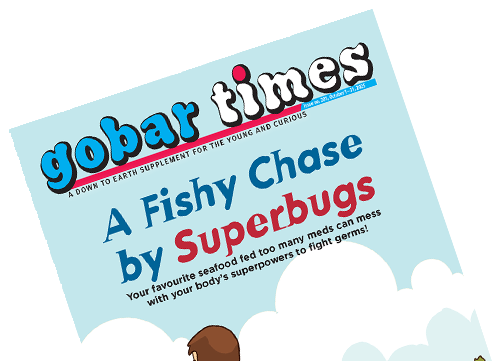
Summarizing the Union Budget in a cool, simplified, less dreadful, more interesting, nowhere mind-boggling, and in quite a thought-provoking manner. *********************************** 11am, 1st February: a moment for which people across the country wait anxiously every year. Why?...

The story of how a village got its first toilet. *********************************** G Nandakumar is a young farmer in Diguvapalem, a remote hamlet and a chronically drought-prone area in southern Andhra. In 2019, I met him on a school hiking trip, as part of our Geography classes. 'Nandu,' fondly addressed as so, was keen to upgrade his village by pursing some sustainable environmental practices, like organic farming. However, he lacked the resources to execute his vision. So, as a young student, I was very inspired by his ideas and wanted to help...

“Such a beautiful place, to be with friends”. Fans of the Harry Potter film series will remember this line, uttered in one of the most heart-breaking scenes of the saga by arguably the most beloved character of them all, Dobby the house-elf. As the adorable elf breathes his last in the arms of his friend and hero, Harry Potter, he inadvertently invites viewers to marvel at the vast, expansive beach that then becomes his gravesite. Twelve years after...

Entrepreneurial projects and learning-by-doing activities help build environmental consciousness among young school children. ************************************************************************ Our surroundings are indispensable to our survival. Hence, environmental conservation has become a high priority the world over, owing to climate crisis, pollution, land degradation, etc. Environmental awareness can be attained by changing the attitude...

Do you know where we got the potato from? Or why birds can have chillies but we can't?... Read some more interesting food-facts like these and know the importance of our food in this comic strip on food items, food wastage, and hunger.

An alert issued regarding unhealthy packaged foods, and how food nutrition labels can and cannot help us to become aware. ************************************************************************************** I know you all kids must be excited about Dusshera and Diwali. The whole month you’ll be exchanging sweets and offering scrumptious feasts. Our friends and families will enjoy beautifully wrapped gifts of savouries— chocolates, candies, chips, soft drinks, and what not! Their advertisements will flood our television screens and social media, and even masquerade as a renewed form of celebration with the …

A look around any supermarket and one thing will be hard to miss: plastic. Every item small or big, from perishables to ones with a long shelf life is packed in plastic. Even the ones that have a covering of their own, say, oranges are needlessly packaged. The fruit is even peeled, kept on a delicate foam tray, and sealed with a plastic sheet. Apples are individually wrapped in comfortable cushions made of plastic. Gourds are packed in cling films. It’s almost as if humans think that their artificial packaging, which is wreaking havoc on the planet, is better than that of nature...

What are Micro-Plastics? Micro-plastics have not been defined in particular. They are just tiny particles that result from the disintegration of bigger plastic materials. However, most researchers say that any plastic smaller than 5 millimetres in size is a micro-plastic. Hence, these are really, really teeny-tiny! Plastics are made up of polymers, which are derived from fossil fuels. A whole lot of chemicals are added to the polymers—close to 10,000—to ensure that a given plastic has the desired properties...

How much can you put at stake to help Mother Earth? Do you think sustainability is a trend? This article answers these questions and peers into mending one’s lifestyle, beginning from the clothes that you buy. **************************** The environment is connected to almost every aspect of our lives, from what we eat and wear to the choices we make on a daily basis like taking the car or cycling down to the supermarket...

